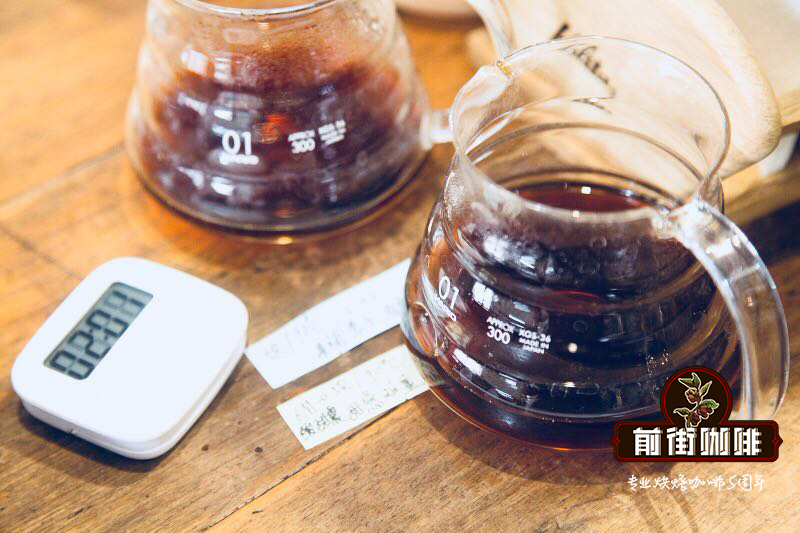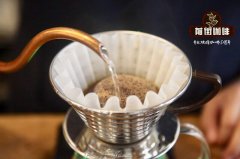Nicaragua Manor Bull Manor Yellow Honey Coffee hand is astringent is why, what kind of water should be used to make coffee?

Professional coffee knowledge exchange more coffee bean information please follow the coffee workshop (Wechat official account cafe_style)
Nicaraguan Coffee-Bull Manor-H1 Variety Red Bull
Nicaragua Gonzalo Ada á n Castillo Honey
Villa: Las Promesas
Area: Dipilto
Variety: H1
Sea pull: 1250 m
Refining method: yellow honey treatment
Baking degree: light baking, medium baking
Las Promesas Bull Manor Information Story introduction:
The coffee of onzalo ad á n Castillo Moreno, the owner of the permanent victorious army of COE in Nicaragua, owns several estates and has been engaged in organic coffee cultivation for 35 years. In the CAF é MAS FINOS OF NICARAGUA competition in 2016, the excellent cups in 2015 and 2017 all had a record of winning prizes, and 75% of the coffee produced reached a high score of 83 in the cup test.
Las Promesas Bull Manor is located in the northern part of NEUVA SEGOVIA near the Honduran border at an altitude of 1100 to 1200 m. Has 35 years of coffee planting experience, the production of many different varieties of coffee.
No matter it is the treatment equipment or the planting technology, it is quite high level. in terms of staffing, there are currently two regular employees, and the rest are contracted, responsible for the raw bean treatment process, including peeling, washing, fermentation, packaging and so on. Bull Manor will do soil analysis every two years, provide the right amount of nutrients through the reference of data, and fertilize four times a year.
The owner attaches great importance to the health management of the farm. The idea of protecting the earth can be seen from many places. The readily available organic fertilizer is the mixed peel of coffee cherries, weeding and picking by hand, weeding 3-4 times a year, in order to reduce environmental pollution, even if the labor cost is too high, in addition to maintaining 30-35% shade trees as much as possible. I hope to slow down the speed of climate change.
A meteorological observation station is set up in the manor to make weather forecasts and records. In addition to the fact that workers can log in and browse information directly on the Internet, it is also open to coffee colleges that communicate with manors, allowing students to observe the relationship between climate change and production capacity. The owner deeply believes that only by taking care of the earth and mastering the key causes of nature, the earth can naturally give back rich and full fruits.
H1 hybrid coffee variety introduction:
What is H1 hybrid coffee?
The H1 hybrid Coffee is a hybrid of Sarchimor T5296 and Rume Sudan.
Sarchimor T5296, a bean variety from Costa Rica's national breeding program CATIE, is a hybrid of VILLA SARCHI and TIMOR. It has strong resistance to diseases and insect pests.
Romi Sultan Sudan Rume belongs to an earlier variety than Typica and Bourbon in genealogical analysis. Because Sudan Rume is mostly planted in Sudan and Ethiopia, its rich gene pool has attracted scholars to study its own disease resistance genes for many years, but it is not popular in various coffee producing countries for many years because its yield is smaller than other varieties. Compared with the traditional common Geisha flavor, Sudan Rume has a relatively rare but rich typical taffy, caramel flavor, but also has a thicker mellow performance.
Main features:
. Resistance to leaf rust
. Vulnerable to American leaf spot
. Planted on less than 40% shading rate and grafted on Robusta, the yield is 30% higher than that of Catua í
. The coffee fruit is firmly attached when it is ripe and is not easy to fall.
. The quality of cup test is satisfactory.
Introduction to honey treatment:
Honey treatment is a kind of treatment between sun treatment and water washing. It keeps the coffee clean by washing, and because it is dried in the sun together with the pulp mucosa, it greatly increases the sweetness and caramel flavor of the coffee (the sugar content of the pulp mucosa is extremely high). Honey treatment first appeared in Costa Rica in Central America, mainly because of the lack of water resources in some high-altitude areas of Central America, so the coffee fruit was dried in the sun together with the pulp mucosa after using the pulp sieving machine.
To put it simply, honey treatment is the way to treat the coffee with pectin and endocarp after the peel and flesh are removed. The key to distinguish between different honey treatments lies in the choice of treatment of the remaining pectin: retention of pectin proportion and drying speed and method.
Honey-treated coffee beans will be graded according to the degree of retention of the pulp (from more to less): yellow honey, red honey, black honey.
Huang (Honey Amarillo)
About 40% of the pectin is removed; the drying method requires the most direct heat absorption, receives the most light drying, and lasts for about 8 days to reach a stable water content. The light time of raw coffee beans treated with yellow honey was the longest. Longer light means higher heat, so this kind of coffee can be dried within a week. In general, the drying time of coffee depends on the local climate, temperature and humidity.
Red (Honey Rojo)
About 25% of the pectin is removed; compared with yellow honey, the drying time is longer, and the time of direct sunlight exposure is reduced, even in shading sheds. The drying time of raw coffee beans treated with red honey is 2-3 weeks, usually due to weather or placed in the dark. If the weather is clear, the grower will shade part of the sun to reduce the sunlight time.
Black (Honey Negro)
Black honey treatment hardly removes pectin; drying takes the longest time, lasting at least 2 weeks, using a covering to avoid too strong sunlight, prevent drying too fast, and make sugar conversion more fully. Coffee beans dry in the dark for the longest time, the shorter the light time, at least 2 weeks of drying time. The black honey treatment of raw coffee beans is the most complex (because of the longer drying time, it takes longer to check to prevent the coffee beans from mildew and fermentation), the labor cost is the highest, so it is the most expensive.
On the palate, in addition to the above-mentioned sweetness, yellow honey is close to the clearness and purity of washing, while black honey is close to the rich fruit aroma and rich texture of sunburn, with red honey in the middle. Of course, this is only a common description of flavor, and the degree of baking, the way it is cooked, and the terroir (soil conditions and microclimate) where different estates are located can still make a difference in taste.
Baking suggestions / Analysis:
Baking degree: light baking, medium baking
Cup test flavor description:
Flavor: hazelnut, peach, plum, green apple, fresh, clean and elegant floral aroma, balanced flavor from fruity and green apple acidity, smooth and layered taste.
Recommended brewing equipment: hand punching, pressure, siphon
Cooking analysis:
Today, we introduce the common method of making Nicaraguan coffee by coffee hands in front street: V60 three-stage water injection method.
Extract by stages, pour all the cooking water into three stages.
Suitable for light, medium and medium roasted coffee beans
Use filter cup V60 cup
Increasing the steaming time or water cut-off times can improve the rich taste of the coffee.
Segmented extraction method of three-stage water injection
Advantages: it is richer than the one-knife flow, and can clarify the flavor of the front, middle and back of the coffee. The method is to increase the amount of water injection each time after steaming, usually when the coffee liquid is about to drop to the surface of the powder layer, and use small, medium and large water flow to do three-stage extraction.
Disadvantages: there will be relatively high requirements for the flow rate and flow rate of water.
Qianjie [Nicaraguan Coffee hand Punch Parameter proposal]
Brewing with V60 filter cup can improve the hierarchical sense of hand flavor, drink more rich and clean, and show incisively and vividly the rich flower and fruit aroma and soft fruit acidity of Nicaraguan coffee.
15g powder, water temperature 89-90 degrees, grinding BG 5R (64% pass rate of Chinese standard 20 sieve), water powder ratio close to 1:15
Technique: steaming with 30g water for 30s. The hot water in the hand flushing pot draws a circle clockwise with the center of the filter cup in the middle of the filter cup, starts the time when brewing, injects water to 30g, then stops the injection and waits for 30 seconds to inject water for the first time.
When the first water injection is the same as before, the speed can be slowed down slightly, speed up a little when you go around the outer circle, cut off the water at about 1:15 seconds, and then inject water again when the liquid level drops 1 inch 3. The second water injection is concentrated on the central water injection. The water flow should not rush to the place where the coffee powder is connected with the filter paper, so as not to produce channel effect. Finish the extraction at about 2:05 seconds, and the longer the time is, the longer the extraction can be done. The astringent and rough taste will increase.
Segment: 30-125-230g
END
Important Notice :
前街咖啡 FrontStreet Coffee has moved to new addredd:
FrontStreet Coffee Address: 315,Donghua East Road,GuangZhou
Tel:020 38364473
- Prev

Nicaragua Shenyin Manor Bourbon tip body coffee suitable for what baking_Bourbon tip body how to bake
Professional coffee knowledge exchange More coffee bean information Please pay attention to Coffee Workshop (Weixin Official Accounts cafe_style) Country: Nicaragua Administrative Region: Lipululo Estate in Jinotega Province Name: Finca La Escondida Estate Manager: Boanerje Martinez Montenegro Variety: This batch is natural low caffeine tip
- Next

What is the taste of coffee made by hand at Santa Maria Manor in Nicaragua? what do you pay attention to?
Professional coffee knowledge exchange more coffee bean information please follow the coffee workshop (Wechat official account cafe_style) St. Mary Manor Information Story: Rhodes St. Mary (Santa Maria de Lourdes) in Nicaragua's most famous coffee producing area (Nueva Segovia), near the city of San Fernando (San Fernando) a few kilometers, belong to
Related
- Detailed explanation of Jadeite planting Land in Panamanian Jadeite Manor introduction to the grading system of Jadeite competitive bidding, Red bid, Green bid and Rose Summer
- Story of Coffee planting in Brenka region of Costa Rica Stonehenge Manor anaerobic heavy honey treatment of flavor mouth
- What's on the barrel of Blue Mountain Coffee beans?
- Can American coffee also pull flowers? How to use hot American style to pull out a good-looking pattern?
- Can you make a cold extract with coffee beans? What is the right proportion for cold-extracted coffee formula?
- Indonesian PWN Gold Mandrine Coffee Origin Features Flavor How to Chong? Mandolin coffee is American.
- A brief introduction to the flavor characteristics of Brazilian yellow bourbon coffee beans
- What is the effect of different water quality on the flavor of cold-extracted coffee? What kind of water is best for brewing coffee?
- Why do you think of Rose Summer whenever you mention Panamanian coffee?
- Introduction to the characteristics of authentic blue mountain coffee bean producing areas? What is the CIB Coffee Authority in Jamaica?

